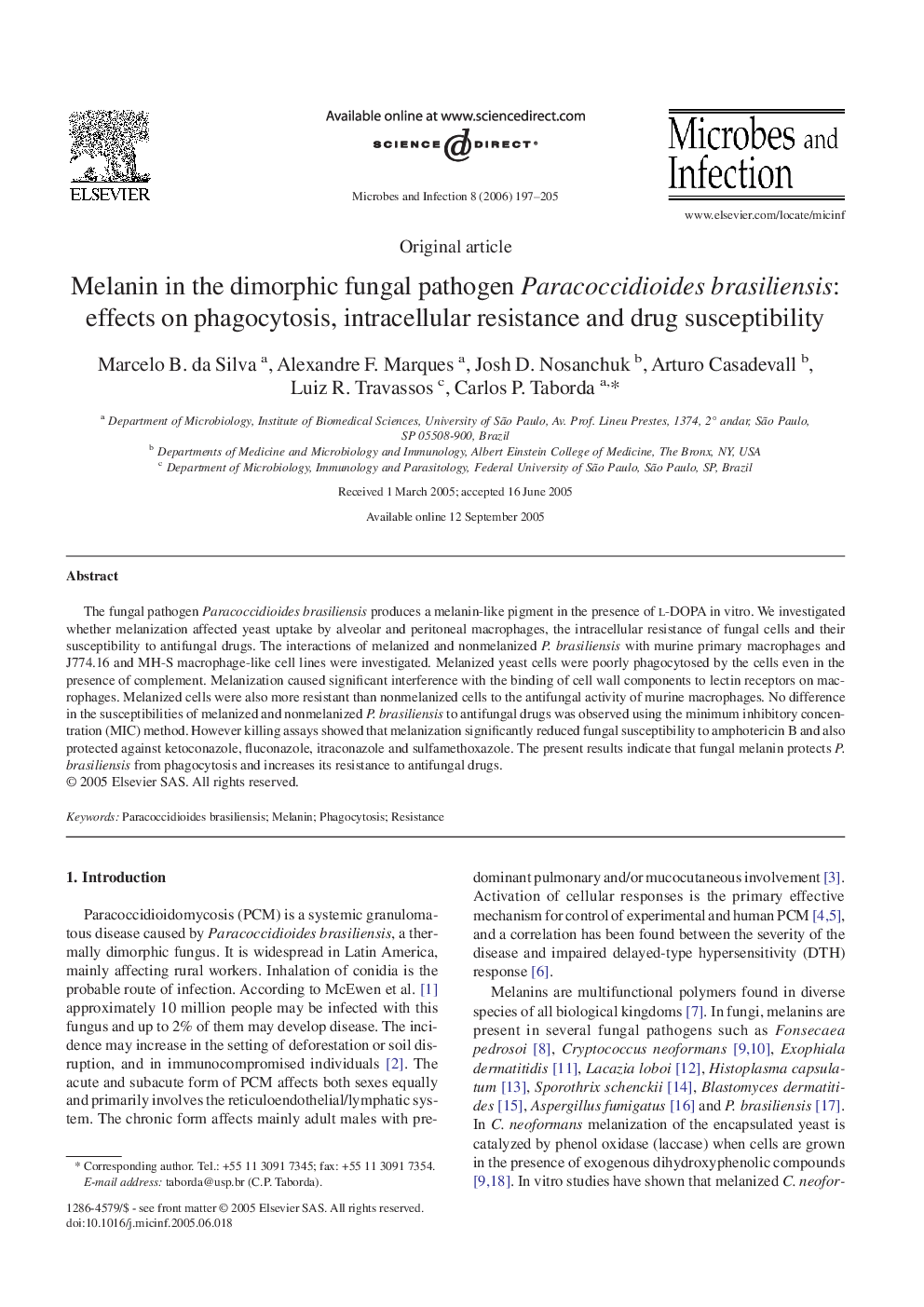| Article ID | Journal | Published Year | Pages | File Type |
|---|---|---|---|---|
| 3415725 | Microbes and Infection | 2006 | 9 Pages |
The fungal pathogen Paracoccidioides brasiliensis produces a melanin-like pigment in the presence of l-DOPA in vitro. We investigated whether melanization affected yeast uptake by alveolar and peritoneal macrophages, the intracellular resistance of fungal cells and their susceptibility to antifungal drugs. The interactions of melanized and nonmelanized P. brasiliensis with murine primary macrophages and J774.16 and MH-S macrophage-like cell lines were investigated. Melanized yeast cells were poorly phagocytosed by the cells even in the presence of complement. Melanization caused significant interference with the binding of cell wall components to lectin receptors on macrophages. Melanized cells were also more resistant than nonmelanized cells to the antifungal activity of murine macrophages. No difference in the susceptibilities of melanized and nonmelanized P. brasiliensis to antifungal drugs was observed using the minimum inhibitory concentration (MIC) method. However killing assays showed that melanization significantly reduced fungal susceptibility to amphotericin B and also protected against ketoconazole, fluconazole, itraconazole and sulfamethoxazole. The present results indicate that fungal melanin protects P. brasiliensis from phagocytosis and increases its resistance to antifungal drugs.
